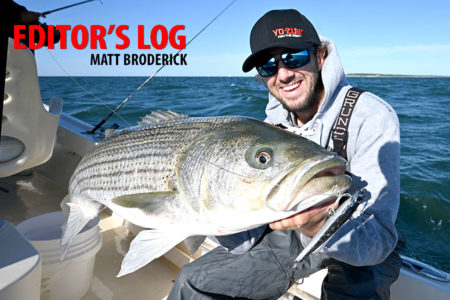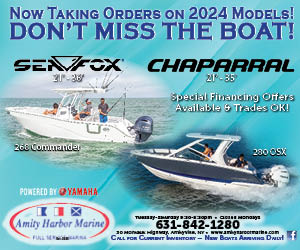I’ve been bouncing between striped bass hearings lately, listening to a lot of people talking about their views on the striper stocks, the impacts of the recent emergency action on charter businesses and trying to weed through these shared experiences to find some common thread of fact within it all. I don’t envy those who sit on the ASMFC’s Striped Bass Board because there is so little common ground between the different user groups whose reasons range so widely, it borders on the impossible to pull any kind of useable consensus out of any of it.
One thing that stands out from the chatter is a growing disdain for the emergency slot limit; this seems to come mostly from the for-hire side of the aisle and this shouldn’t come as a surprise. They say it’s a tough target to hit for customers that want to take home a striped bass for the table. And it’s hard to argue with that.
I’ll admit that I originally kind of filed these grievances under ‘tough cookies’, thinking that they would just need to get through this tough time like the rest of us. On this new agenda put out by ASMFC there is an option where the for-hire fleet would get a larger slot limit of 28 to 33 inches while the private recreational anglers would get 30 to 33. Predictably, a large contingent of the for-hire captains and crew in attendance came out in favor of that option.
One guy stood up to clarify his reasoning, saying that “the charter fleet fishes differently and contacts more fish on a typical trip than the typical recreational angler.” I was curious enough to stop him – mid-sentence – to ask him to clarify. He went on to explain that the goal of many trips is to get a few keeper bass and then move on to something else like fluke, sea bass or scup. He reasoned, a wider slot would give them a higher probability of finding a keeper more quickly, therefore handling fewer stripers per trip which might actually be better for the fishery. I had never thought of it that way.
His words rattled around in my head for days as my personal and professional self duked it out inside my skull. At the next meeting I attended, this one at the Mass Maritime Academy, along the banks of the Cape Cod Canal, an attendee asked a loaded question about ‘closing certain spots where fishing mortality was the highest’; this thinly veiled quip was clearly engineered to get a rise out of the Canal anglers in attendance, but nobody took the bait.
However, it did ignite another light bulb inside my head. Thinking back to 2017 and 2018 when the Canal saw some of the most intense blitzes of the last 15 years, there was a shameful amount of ‘high grading’ taking place along those banks. If you don’t know what high grading is, it’s when someone keeps a big fish, then catches a bigger one and ‘releases’ the smaller fish (dead) back into the water. There were rumors that commercial fishermen were picking up the floaters outside the Canal and selling them. I doubt that actually happened, but I can personally attest to the fact that there was an embarrassing number of dead fish floating by during those blitzes and it occurred to me that the slot limit removes the temptation to high grade because all ‘big’ fish are outside the slot and cannot be legally kept. I’m sure some of you are rushing to call me out on the fact that these unlawful anglers wouldn’t follow laws then and still won’t now. But I hasten to remind you that back then it was legal to walk off carrying a 40-pounder, today it is not and that would be enough deterrent for most of the guys who were tempted by the glory of bringing home a bigger fish in the past. Poachers are a different issue and no law will stop them.
The overall demeanor of the board members that have lead these meetings is ominous, they almost seem to be telling us that recovery by 2029 (an ASMFC goal) is a pipe dream at this point. With five straight very poor spawning classes in a row, there will be a huge hole in the fishery and we’re all going to have to endure that dearth of stripers as it works its way through the fishery. It is assumed that 9% of all striped bass that are caught and released will die as a result of that interaction. In response, the best thing we can do as recreational anglers is to take every possible measure to ensure that this number is an overestimate by demonstrating the best release practices and showing restraint when it comes to harvesting a fish, only taking what we truly need and putting the rest back. From there, we’ll have to hope that the slot limit and all the math these managers are relying upon will see us through.
And I’m starting wish I was better at crossing my toes…




